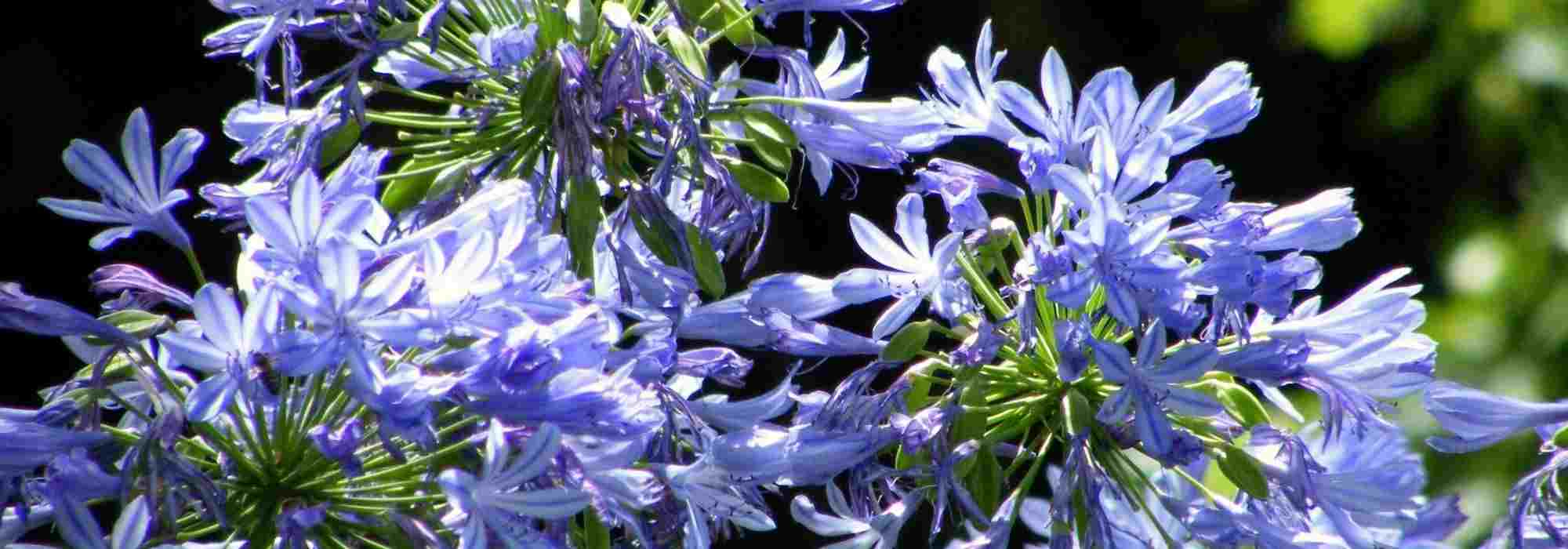
7 blue Agapanthus
Our selection to discover and adopt
Contents
Originating from South Africa, agapanthus are magnificent perennials that thrive in sunny locations, preferably in a mild climate. They are recognisable by their large umbels that are often blue, sometimes white, which brighten and illuminate gardens during the summer. They also add a lot of structure to flower beds. Indeed, they are a staple in contemporary gardens. Versatile, they also fit well in more natural gardens like English gardens. Additionally, they can also be grown in pots on a terrace. Their strap-like foliage can be either evergreen or deciduous depending on the variety. In short, a plant to adopt without hesitation. Here is a selection of 7 blue-flowering agapanthus.
Agapanthus 'Ever Sapphire', a long and early flowering variety, even in pots.
The Agapanthus ‘Ever Sapphire’ stands out for its early flowering of intense sapphire blue (hence its name). This very abundant display begins in May and continues until August, and even into October if the weather is mild. The numerous hemispherical umbels measuring 10 cm in diameter rise above the deciduous foliage, which forms a relatively low clump of 50 cm in height. Furthermore, it is a very hardy agapanthus that can withstand temperatures down to -10°C, or even -12°C if protected with mulch in winter.
In the ground, it makes for beautiful borders. You can pair it with crocosmias to add colour: the bright orange contrasts beautifully with the blue of the agapanthus. This variety is best placed towards the front of flower beds. Alongside sages, nepetas, lavenders, and white agapanthus, it creates very natural flower beds to which you can add tall grasses, such as miscanthus, in the background to enhance the effect.
Moreover, this variety can just as easily be grown in pots due to its modest size. Very floriferous, it can alone bring a pleasant vibrancy to your terrace throughout the summer. A white agapanthus or a lavender in a nearby pot, with their white and blue tones, will provide a refreshing sensation. By placing a canna nearby, you will instead create an exotic atmosphere.
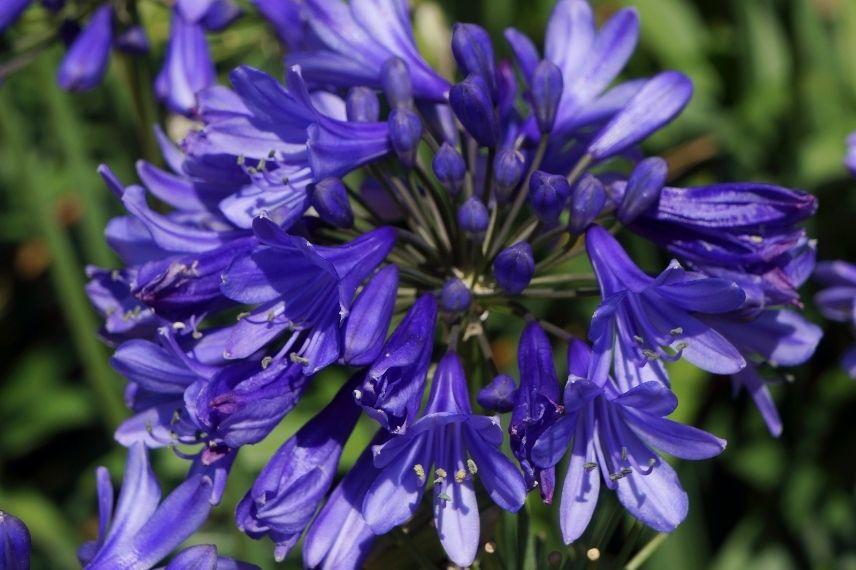
Agapanthus ‘Ever Sapphire’
Read also
Agapanthus: planting, growing and careThe 'Black Buddhist' Agapanthus, a unique appearance
If it is medium in height for an agapanthus at 80 cm tall, the ‘Black Buddhist’ variety stands out for its good hardiness down to -8 to -10°C, provided the stump is protected by a thick mulch in winter. It also has an incredible appearance with its deciduous foliage from which green flowering stems emerge in July and August that, with sun exposure, take on an almost black hue that is truly astonishing and bear beautiful spherical umbels 10 cm in diameter of a deep blue. This is an easy-going and very graphic agapanthus.
Accompanied by other blue, white, and purple agapanthuses, they will create a very minimalist decor. Why not opt for other varieties with dark stems like ‘Graphite White’, ‘Graphite Blue’, ‘Intermedius’, or even ‘Black Magic’ to enhance the contrast effect? If you wish to give a contemporary look to your flowerbed, you can combine it with carex and other grasses that will add structure.
Not having an excessive spread, the ‘Black Buddhist’ agapanthus can be grown in a pot on a terrace, where it brings its rich colour during the summer. You can pair it in a nearby pot with a Calibrachoa, choosing the colour based on the desired effect.
Discover other Agapanthus
View all →Available in 0 sizes
Available in 2 sizes
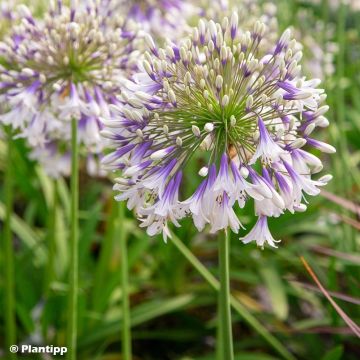
Available in 3 sizes
Available in 1 sizes
Available in 0 sizes
Available in 0 sizes
Available in 5 sizes
Available in 2 sizes
Available in 2 sizes
Available in 2 sizes
Agapanthus 'Blue Giant', robust and vigorous
The umbels of the very bright blue Agapanthus ‘Blue Giant’ rise to a height of 1.5 m in July and August. This deciduous and very vigorous variety, among the largest of the agapanthus, withstands cold down to -12°C, provided it is planted in well-drained soil and its stump is covered with a substantial mulch. It can therefore be planted in many regions, although it prefers mild climates like most agapanthus.
Feel free to plant it alongside the great elecampane or the autumn helenium with its tall yellow summer flowering, which will create a lovely bright contrast in a border. It is also possible to associate it with fairly tall rudbeckias such as Echinacea purpurea ‘Magnus’ or Echinacea ‘Fatal Attraction’, which, with their purple hues, will create a romantic atmosphere and will tower over the large blue umbels of Agapanthus ‘Blue Giant’. In the background, a large white flowering Hydrangea such as Hydrangea paniculata ‘Dentelle de Gorron’ or ‘Kyushu’ can be placed.
For an orange and blue ambiance, pair it with the tall Crocosmia ‘Paul’s Best Yellow’ with its light orange flowers or Crocosmia ‘Lucifer’ with its more intense orange for a tall border with dynamic tones.
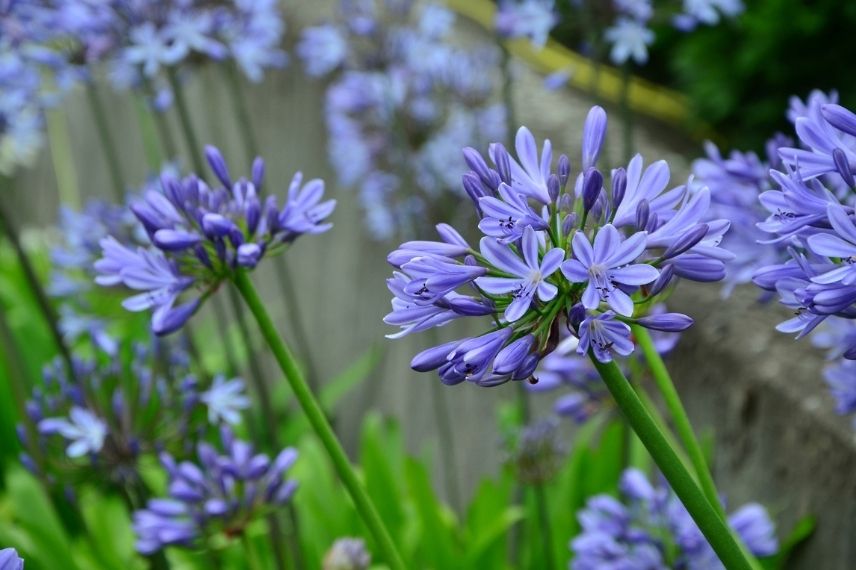
Agapanthus ‘Blue Giant’ (photo Pixabay)
The 'Stars and Stripes' Agapanthus, a delicate striped flowering perfect for cut flower arrangements.
The Agapanthus ‘Stars and Stripes’ features a beautiful summer flowering with its hemispherical umbels made up of relatively large flowers in a light blue striped with a darker blue Its evergreen linear foliage forms a clump of 50 cm in all directions, which adds ornamental interest to the garden throughout the year. However, due to its medium hardiness down to -8°C, it can only be grown in the ground in regions with a mild climate, by the sea. Elsewhere, it should be potted to protect it from frost during the colder season.
Give it a prime spot in your plantings. Tulbaghias can accompany it with their light and delicate flowering in similar tones. For more contrast, crocosmias can provide an orange backdrop.

The striped flowers of Agapanthus ‘Stars and Stripes’ (photo Guido)
The 'Celebration' Agapanthus, with trailing pale blue bells.
The flowering of the Agapanthus ‘Celebration’, from June to September, is quite unusual with its almost closed, trailing trumpet-shaped flowers. It also boasts an original colour with its very soft pale blue tinged with grey. The foliage is elongated and deciduous, and the plant is fairly cold-resistant, tolerating temperatures down to -12°C provided it is in well-drained soil and mulched in winter.
The delicacy of its flowering, reaching 70 cm in height, encourages planting it alongside other plants with soft tones, such as the Buenos Aires verbena, which will add a touch of lightness, or in the foreground of the Hydrangea arborescens ‘Annabelle’ with its abundant white flowering in summer.
It will also be enhanced by other agapanthuses with deep blue hues, such as the agapanthus ‘Blue Jeans’ or ‘Graphite Blue’, or white ones like the agapanthus ‘White Heaven’.
In colder regions, grow the agapanthus ‘Celebration’ in a pot that you can place wherever you like during the beautiful season.
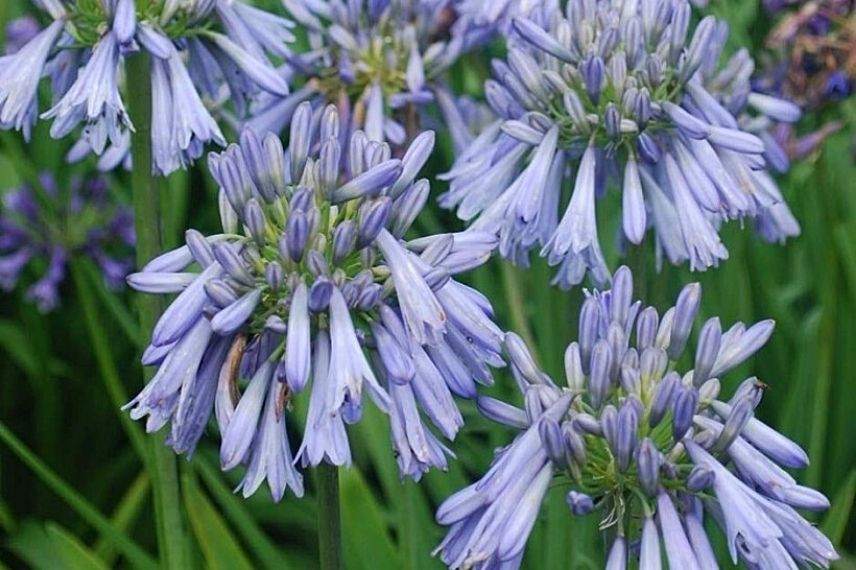
Agapanthus ‘Celebration’
The 'Lapis Lazuli' Agapanthus, a low-growing agapanthus with a long flowering period.
The Agapanthus ‘Lapis Lazuli’ is a relatively low variety with a clump of semi-evergreen foliage not exceeding 30 cm in height, from which floral stems bearing spherical umbels emerge at 50 cm tall. This makes it an ideal variety for pathway borders and container cultivation.
The flowering, which begins in June, is repeat flowering until September and particularly abundant. Its intense blue resembles the stone it is named after, and the almost black tips of the stamens seem to punctuate the ends of the flowers. While it is relatively hardy and can occasionally withstand -10°C, it prefers regions with a mild coastal climate.
The Agapanthus ‘Lapis Lazuli’ paired with a low lavender such as Lavandula angustifolia ‘Bleu de Gien’ will create a lovely blue flowering border during the summer, perhaps with a ceanothus in the background.

Agapanthus ‘Lapis Lazuli’
The 'Back in Black' Agapanthus, a dark cold-resistant agapanthus
The Agapanthus ‘Back in Black’ is a relatively recent variety that stands out for its unusual appearance as well as its great hardiness for an agapanthus. It features dark green evergreen foliage. Although it can withstand temperatures as low as -15°C, it is advisable to plant it in a sheltered area of the garden, and if possible, in a pot so it can be protected in case of a drop in temperatures.
It bears spherical umbels of a very dark blue at the ends of stems that are 80 cm tall and are themselves almost black, giving it an extremely graphic appearance. It will look stunning in a contemporary garden when paired with pure white agapanthuses like the Agapanthus ‘Glacier Stream’ or the ‘Graphite White’ agapanthus. A bamboo of the type Fargesia ‘Winter Joy’ can serve as a backdrop for this minimalist decor.
For an English-style garden, pennisetums and stipa can add a natural touch. A purple ambiance with Pennisetum x advena ‘Rubrum’ and ornamental alliums such as Allium atropurpureum and Allium ‘Forelock’ will be enhanced with santolines and lavenders with grey foliage placed here and there. You can also add globe thistles of the genus Echinops to perfect the decor.
- Subscribe!
- Contents
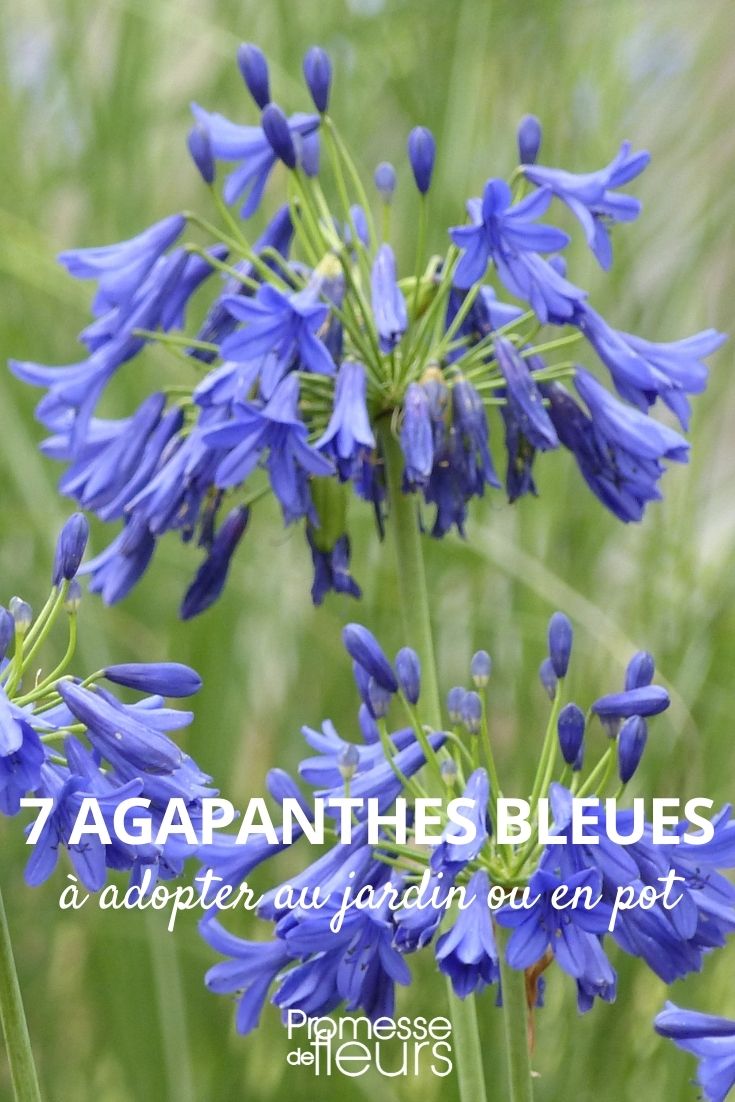
































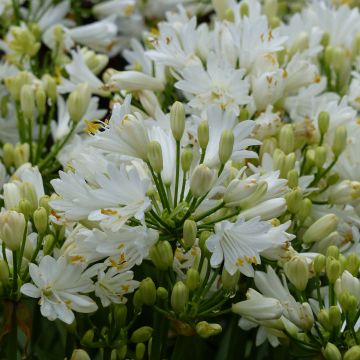

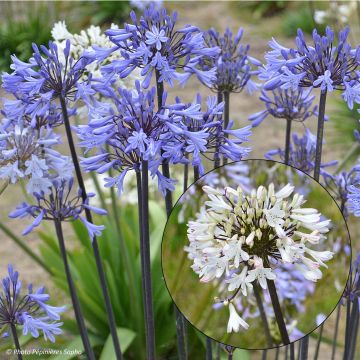
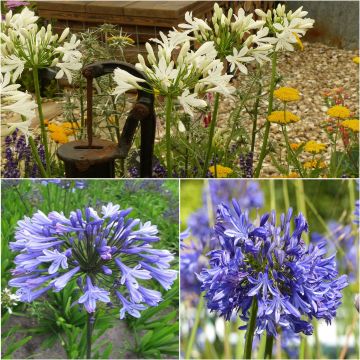
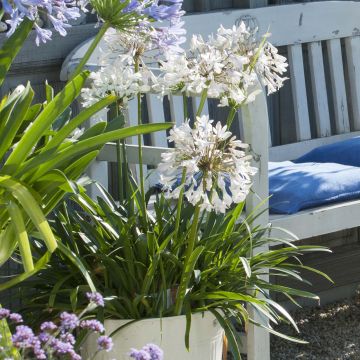
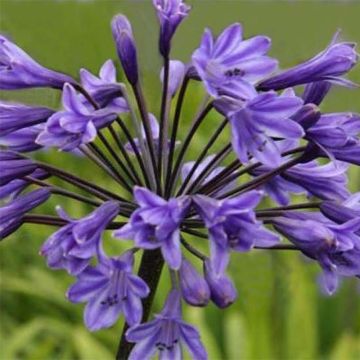
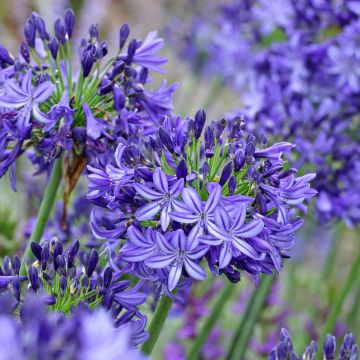
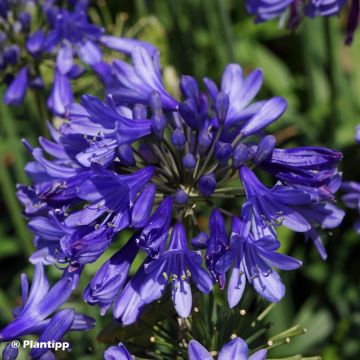
Comments